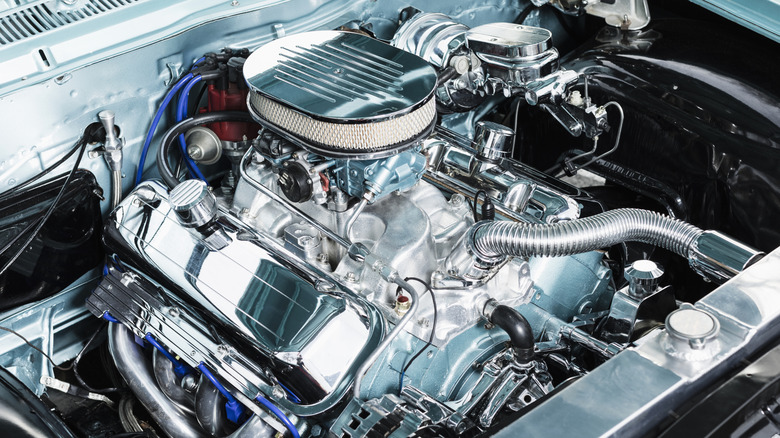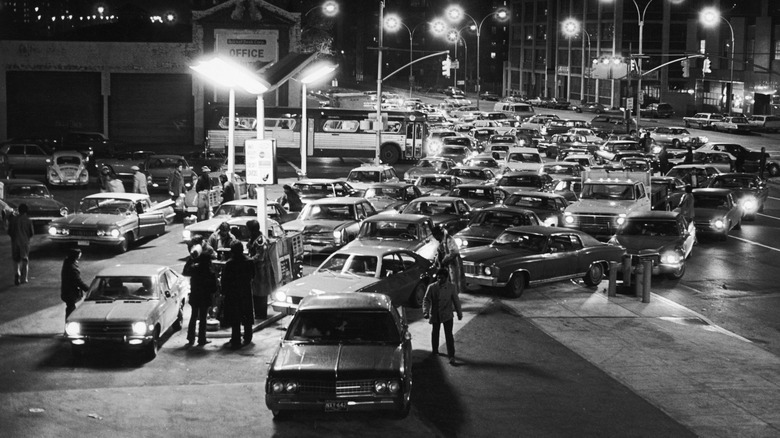Why Most American Automakers Stopped Building Big Block Engines
Back in the 1960s and early 1970s, muscle cars with big block engines were the undisputed kings of all American roads, with Detroit at the heart of it all. At this time, it was all V8 powerhouses everywhere you looked on the road — from Chevy's legendary 454, to Ford's 429 Cobra Jet, and Chrysler's monstrous 426 Hemi, all cranking out crazy horsepower and torque figures.
For any gearhead, it must have been a great time to be alive — having the chance to just sit behind such raw power. Then came 1970, and everything took a drastic turn. Congress, through the EPA, amended the Clean Air Act in an effort to tighten up emissions regulations. While necessary — especially with the long-standing smog problem clouding most U.S. cities at the time — this was a huge blow to Detroit, which was throwing out monster V8 engines like freebies, each one capable of shaking pavements and rattling windows.
All of a sudden, automakers had to make changes to engine displacement, exhausts, compression ratios, and carburetors under the new laws to help cut down smog and other pollutants by 90%. And just like that, the big blocks everyone couldn't stop talking about were quickly seen as liabilities.
Insurance companies slammed the brakes
Growing insurance costs were another nail in the coffin for big block engines long before the Oil Crisis. Insurance rates were on a rising trend at the time, having begun just around the same time as the muscle car craze in the '60s through the '70s. Insurance firms had noted a rise in deadly accidents involving muscle cars at the time, which led those organizations to increase premiums on any vehicles producing V8 displacement or with a sporty badge.
For instance, it cost approximately $300/year to insure a 1970 Chevelle SS, three times the yearly insurance premium for a Corolla. States like New York even took things further, subjecting high-performance models to "supercharger surcharges." Many motorheads and potential buyers, particularly younger drivers who fueled the muscle car hype, found the high insurance rates on these vehicles unaffordable. As a result, sales of cars with V8 engines had fallen 55% by 1975.
The 1973 Oil Crisis and the permanent shift of automotive consumer tastes
Just three years after the Clean Air Act of 1970, the Organization of the Petroleum Exporting Countries curtailed exports to anyone who was pro-Israel during the Yom Kippur War, including the United States. As a result, the 1973 Oil Crisis came about. Oil became a scarce commodity, and gas prices skyrocketed as a consequence. A gallon of gas that cost $0.36 in 1972 jumped to $0.53 in 1975. This was undoubtedly bad news for muscle car owners and buffs, considering how thirsty for gas high-performance muscle cars with V8 engines are. For this reason, big blocks started to become unpopular.
Around the same time, automotive innovations more focused on increased safety, better fuel efficiency, and less emissions started to take center stage. Automakers downsized engines, replacing gas-guzzling V8s with efficient small-block engines, and even began exploring aerodynamics improvments for now-compact models. Marking these changes were a few cars: Most notably the 1974 Chevrolet Camaro, which featured lighter accessories, such as aluminum bumpers, while also dropping its 396-cubic-inch V8 (375 horsepower) in favor of a 350-cubic-inch top-spec engine producing just 185 horsepower.
More and more efficient, compact engines continued to roll out from international automakers. By 1980, imported brands captured nearly 27% of the U.S. market — up from just 15% in 1973 — cementing a shift in American automotive tastes.


